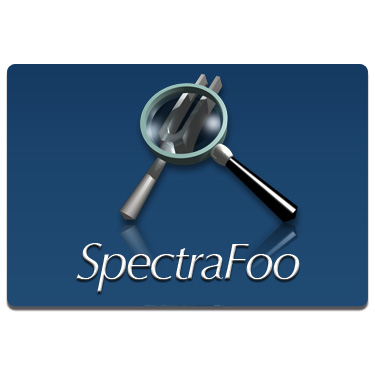|
 SpectraFoo, the original Macintosh audio analyzer SpectraFoo, the original Macintosh audio analyzer
After reading this story, every FOH mixer will be begging for his or her own personal Doug Lemke/SpectraFoo combo for the Holidays. In a nutshell, Lemke’s recent outing with enduring 80s pop-rock legend Tears For Fears epitomized the challenge that FOH engineers are forced to confront over and over again – as if in a bad dream! – different venues and different PAs from night to night conspired to threaten the repeatability of veteran engineer JB Blot’s otherwise studio-worthy mix. But Lemke provided a robust solution to this timeless trial. He used the power and nuance of Metric Halo’s SpectraFoo audio analysis software to tune each disparate system to match the sonic fingerprint of Blot’s reference Genelec nearfield monitors.
“JB is a fantastic engineer,” explained Lemke. “He’s got the ‘golden ears’ of a great studio engineer, which is where he spends most of his time. He hears everything, for better or for worse. Tears For Fears were putting on seventeen shows on the East Coast and we ran into problems almost immediately. JB uses a stereo pair of Genelecs above the Digidesign Profile to hear cued instruments for treatment, but when he went back to the house PA, the tone was quite different.”
Lemke’s solution was to effectively mold each PA system they encountered into a giant pair of Genelecs. He used Metric Halo’s SpectraFoo analysis software with an Earthworks M30 microphone to quantify what he was hearing. He captured traces of the Genelecs in SpectraFoo and then used a Lake Contour and Lake Mesa Quad EQ system to dial the house into the Genelecs’ response. “SpectraFoo was invaluable,” he said. “The real-time spectragraph and spectragram are so responsive and intuitive, I was very clearly able to discern what was happening sonically. In addition to shaping the response of the PAs, I also found a lot of technical problems in the form of blown components or misalignments. Fortunately, I detected them early on so we could either implement a fix or a work around in time for the show.”
In addition to the comprehensive pre-show tune-up, Lemke kept SpectraFoo up during Tears For Fears’ performances to tweak the response as it was altered by the absorption of the fans. “We recorded every show,” he added. “So there was a motivation to really dial in the perfect sound. I again kept my eye on the FFT information, which has plenty of resolution to pick up room modes. Those modes often shifted in a packed house.”
Lemke got his start in the pro sound industry behind the FOH desk in country bars as a teenager and now has three decades of in-the-trenches experience. He has been a SpectraFoo user for eight years, almost since the software’s advent. “There’s no limit to what I can do with SpectraFoo,” he said. “I take it with me to every job, be it a live sound tech gig, like this one, a corporate meeting, or whatever. When I first started using it and had questions, I never hesitated to contact Metric Halo. There was always a helpful person on the phone, and I continue to be very happy with the support they provide me.” |